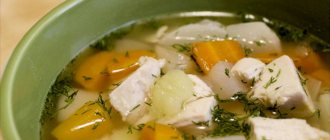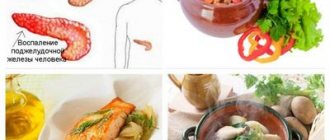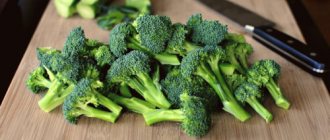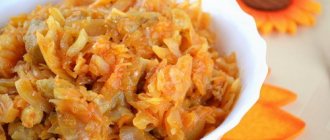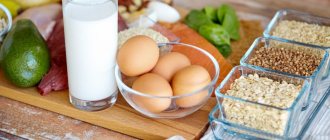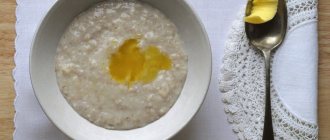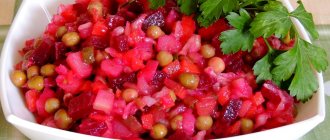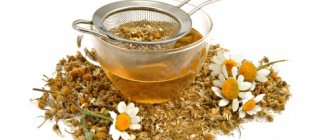Many people love tomato juice. It has a unique taste that is difficult to confuse with anything else. If you add a little salt to this drink, the taste sensations are enhanced, and in some cases it can even be used instead of food. In addition, it is actively used as a substitute for natural vegetables in the preparation of various dishes, and can also be the basis of various popular cocktails. It contains a large amount of useful substances and vitamins, it combines well with other juices, which allows it to be consumed by people of all ages. However, there are some restrictions for patients with pancreatitis.
Useful properties of tomatoes
North America is considered the birthplace of tomatoes. They came to Europe thanks to Christopher Columbus, where they gained popularity. Nowadays tomatoes are widely distributed throughout the world. Nutritionists consider it a very healthy vegetable because it is rich in elements such as:
- Vitamins A, B, C, E, H and PP;
- Beta carotene;
- Almost all the mineral elements necessary for the body (potassium, magnesium, iron, zinc, molybdenum, and so on);
- Necessary organic acids: succinic, oxalic, tartaric, citric, malic;
- Sugar in the form of glucose and fructose.
Thus, by eating a tomato, a person receives almost the entire necessary set of nutrients, which are easily absorbed. Tomatoes processed into juice not only do not lose their beneficial properties, but on the contrary, they acquire new ones. In particular, a tomato drink:
- Promotes the removal of toxins from the body, including heavy metals;
- Stabilizes metabolism and blood pressure levels in the body;
- Kills germs;
- Helps increase milk supply in nursing mothers;
- Provides prevention of cancer;
- It has a positive effect on blood composition, increasing hemoglobin levels and normalizing glucose levels.
However, it must be borne in mind that tomatoes also have a choleretic and diuretic agent, so tomato juice for pancreatitis should be consumed carefully and only on the recommendation of a doctor.
Vegetables for pancreatic disease
If you have pancreatic diseases, you need to eat right
Tomatoes. Should you eat tomatoes if you have pancreatitis? Nutritionists cannot give a definite answer to this frequently asked question. Some argue that tomatoes are extremely healthy because they contain a large amount of fiber, which is so necessary for the gastrointestinal tract. Tomatoes also help remove cholesterol from the blood, which is very valuable for the functioning of the gland.
Another group of nutritionists is confident that eating tomatoes during pancreatitis is strictly prohibited, especially during its exacerbation. But both of them are unanimous in the opinion that under no circumstances should you eat unripe tomatoes, which contain many toxins.
Freshly squeezed tomato juice turns out to be a very useful product, but not produced under industrial conditions. It has a beneficial effect on the gland, stimulating its work. The combination of tomato and carrot juice is especially good for these purposes. Tomatoes can also be eaten stewed or baked. But in everything you need to adhere to the rule of the golden mean, even in eating healthy foods.
Tomato juice has a choleretic effect, so you should not drink it during a crisis of chronic pancreatitis. This can worsen the situation, since secondary reactive pancreatitis may occur, as with cholelithiasis. The result can be very unfavorable, including disability or death. Thus, you can consume tomatoes and tomato juice during the period of remission of chronic pancreatitis, when there is no pain, ultrasound results do not show swelling, and tests show normal levels of diastase, elastase, and amylase.
Cucumbers. Cucumbers are very rich in vitamins and various microelements, despite the fact that 90% of their composition is water. If you have pancreatitis, you can definitely eat cucumbers. Moreover, there is a cucumber diet, which is often prescribed for pancreatitis. Over the course of a week, a person should eat 7 kg of cucumbers, which relieves the gland and prevents inflammation in it. But, you should know in moderation in everything; excessive consumption of cucumbers, especially those containing nitrates or pesticides, will not only not be beneficial, but can even cause harm.
Cabbage. For pancreatitis, any cabbage can be consumed only after it has been dried or boiled. Sauerkraut is very irritating to the mucous membranes, so you should not eat it. In its raw form, you can occasionally consume only Chinese cabbage, but you should remember that after an exacerbation, any new type of cabbage should be introduced gradually. What do nutritionists say about seaweed?
The usefulness of seaweed is an indisputable fact, since it contains essential microelements such as nickel and cobalt, which ensure normal functioning of the gland.
If you have pancreatitis, you can eat seaweed, but only for the population of Southeast Asia, since their enzymatic system differs from that of Europe. Even the instructions for Japanese medicines contain a warning that when taken by Europeans, the medicine may be ineffective. Therefore, seaweed should not be consumed during inflammation, especially during a crisis. This product is more similar in composition to mushrooms than to other types of cabbage, and its disposal will require the release of a large number of enzymes, which will lead to worsening inflammation.
Drinking juice for acute pancreatitis
If the patient has an acute attack of the disease, this drink will have to be completely abandoned. This is due to the following reasons:
- Tomatoes contain a large number of various organic acids, which have a stimulating effect on the secretory cells of the stomach and pancreas, causing them to produce certain enzymes. This requires more active work of the organ, which is extremely undesirable during the period of illness. To restore the normal functioning of the organ, its rest is required, for which a strict diet is prescribed.
- Side effects of microelements contained in tomatoes are diarrhea and flatulence, which also negatively affects the patient’s recovery process.
- Due to the choleretic effect of tomatoes, the body may begin to produce more of this substance, which will end up in the pancreatic ducts and require additional stress on the pancreas, which is contraindicated during an acute attack of pancreatitis.
- Many people prefer to drink tomato juice with salt, and salt has a negative effect on the pancreas, causing it to swell during the acute period of the disease.
Is it possible to drink tomato drink if you have pancreatitis?
Nutritionists and other medical specialists have not come to a common opinion about the benefits and harms of tomato paste. Many factors depend on the products themselves, because... On store shelves it is difficult to find truly high-quality and fresh vegetables, in the cultivation of which no additives or fertilizers harmful to the body were used. When studying the composition of tomatoes in detail, experts are increasingly discovering various additives, stabilizers, dyes and other harmful substances. All this negatively affects the body as a whole, not to mention the affected pancreas. Also, the answer to this question directly depends on the form of this disease and the amount of serving consumed per day. Pancreatitis is divided into 2 types:
- spicy;
- chronic.
In acute pancreatitis, all the symptoms of the disease become pronounced, so drinking tomato juice or eating tomatoes is prohibited. Tomato juice increases the acidity of gastric juice and increases the secretion of bile by the liver. Also, due to stimulation of the pancreas, the secretion of pancreatic juice increases. These factors lead to severe discomfort, pain in the abdomen, vomiting and diarrhea.
During the period of exacerbation of the disease, doctors do not recommend eating fresh fruits and vegetables; tomatoes are no exception, this is due to the following reasons:
- because tomato juice has choleretic properties, the risk of bile entering the pancreatic ducts increases, which is why it begins to secrete aggressive enzymes;
- Due to their dietary fiber content, tomatoes can aggravate diarrhea;
- tomato juice increases the production of enzymes that can cause damage to pancreatic tissues, stimulating the inflammatory process.
The conclusion is obvious: eating tomatoes in acute pancreatitis is contraindicated, because their juice can provoke attacks of this disease.
IMPORTANT! Heat treatment of tomatoes will not protect against negative effects on the pancreas in acute pancreatitis.
When making tomato juice, use homegrown tomatoes. Store-bought tomatoes may contain components harmful to the body.
In case of chronic disease
Drinking tomato juice is allowed only during the remission stage (during the “quiet” period). The inclusion of this product in the diet is allowed only with the permission of your attending physician, who is familiar with the course of the disease.
Restrictions for the chronic form of the disease
After acute attacks of the disease have resolved, you can gradually begin to drink tomato juice. This can be done only after the doctor’s permission, since only a qualified specialist can adjust the patient’s diet, regularly monitoring his condition.
At first, you are only allowed to drink a diluted drink. One third of the juice should be diluted with two thirds of water. At the initial stage of drinking the drink, we are not talking about adding salt, of course. If there are no side effects or pain in the abdominal area, you can proceed to drinking more concentrated juice - dilute it with water one to one. Later, it will be possible to dilute it with just a third of the water, and, perhaps, if there is individual tolerance, drink a concentrated drink. In this case, you should limit the amount of drink consumed - no more than a glass of diluted juice per day, or no more than 100 grams of concentrated juice.
Of course, you can only eat natural drinks without adding any dyes or flavor enhancers.
Allowed doses and rules for consuming tomato juice
After acute attacks are relieved, moderate consumption of tomatoes or tomato drink is allowed. But this needs to be done gradually. You should start with 1 glass of juice per day. The juice should be mixed with 1/3 water to reduce the concentration. These measures are necessary to see how the body responds to this. If the pancreas reacts normally, over time the concentration of tomato juice can be increased or the serving size can be increased. The maximum permissible daily intake should not exceed 300 ml of diluted juice or 100 ml of pure juice.
The concentration of tomato drink can be diluted with pumpkin and carrot, this is not only very healthy, but also tasty
Pay attention to the quality of the product. To prepare fresh tomato juice, you should use only fresh and ripe tomatoes. Store-bought products tend to be of lower quality, so use homemade vegetables instead. When preparing any dishes or tomato juice, it is advisable to cut off the skin of the tomato. Do not eat green tomatoes under any circumstances, because... they contain a high content of toxins, they can provoke acute attacks of pancreatitis.
Because Fresh tomato juice activates the pancreas; experts recommend diluting it with pumpkin or carrot juice.
Special attention must be paid to salt. Most people like to add salt to tomato juice for a more pleasant taste sensation. For any form of pancreatitis, this is strictly contraindicated. Salt can cause swelling, and this leads to the spread of inflammation. Adding other spices to the drink is also contraindicated.
Positive effects of tomato nectar on the body during chronic pancreatitis:
- enriching the body with essential amino acids and substances;
- reduction of pathogenic bacteria;
- antioxidants in tomato juice prevent cancer and other diseases of the body as a whole;
- reducing the risk of depression and nervous breakdowns.
In addition, tomatoes are considered a low-calorie product. This allows it to be used for therapeutic and prophylactic purposes. Tomatoes are often prescribed by nutritionists to people who are overweight.
Before grinding tomatoes in a blender, remove the skin from them, this will reduce the risk of irritation of the pancreas
IMPORTANT! You can add tomatoes to your diet only with the permission of your attending physician, who is monitoring the course of your disease.
Let's sum it up
Tomato nectar contains a large number of microelements and minerals beneficial to the body. In case of acute pancreatitis, its use is not recommended. When stopping attacks and the chronic course of the disease, you can gradually include tomato juice in the diet, but only with the permission of the attending physician. The concentration of tomato juice should be diluted with water. Adding salt and any spices to the drink is strictly prohibited. Violation of the diet can provoke an attack of pancreatitis, which will cancel out the courses of treatment carried out previously.

